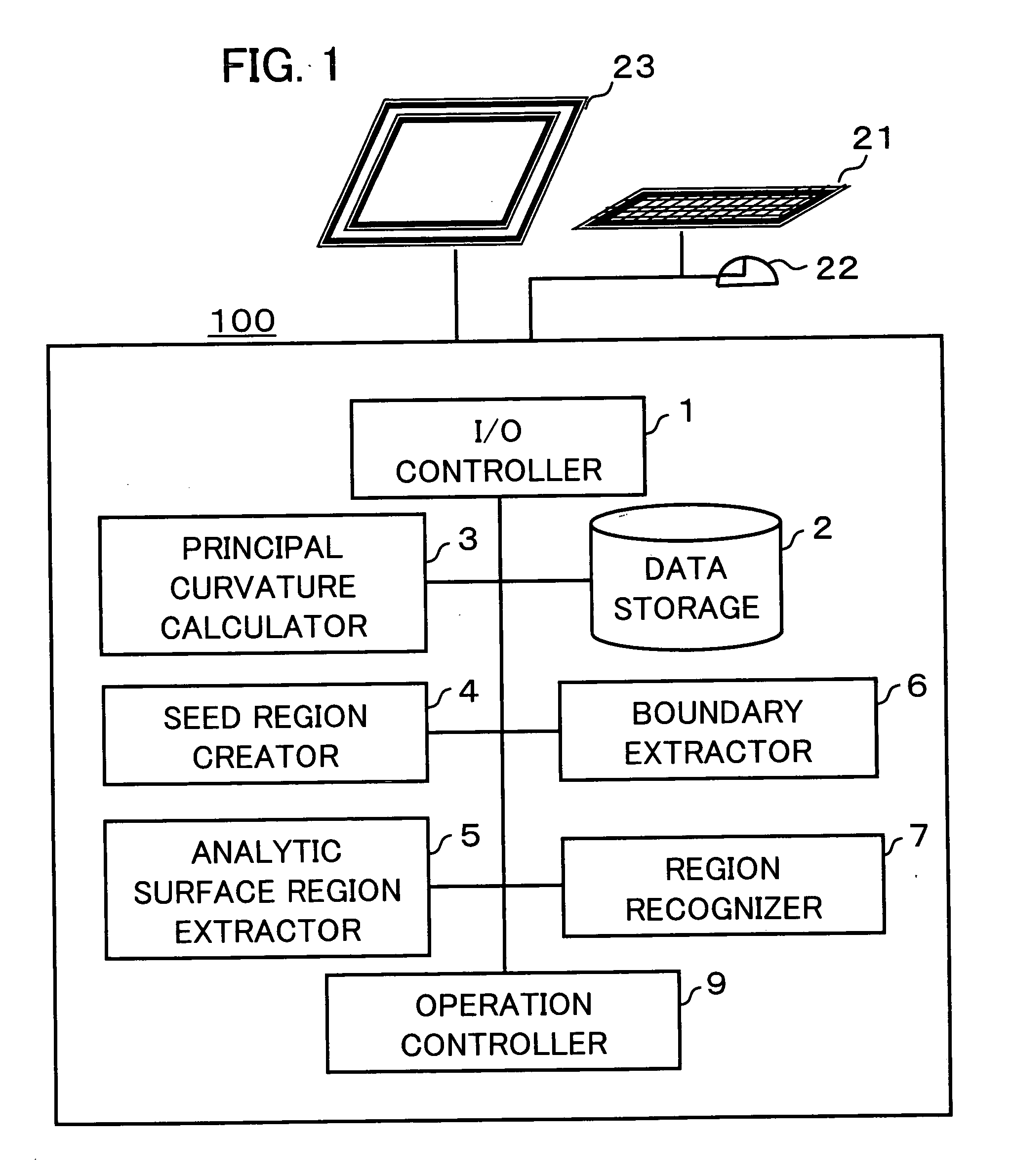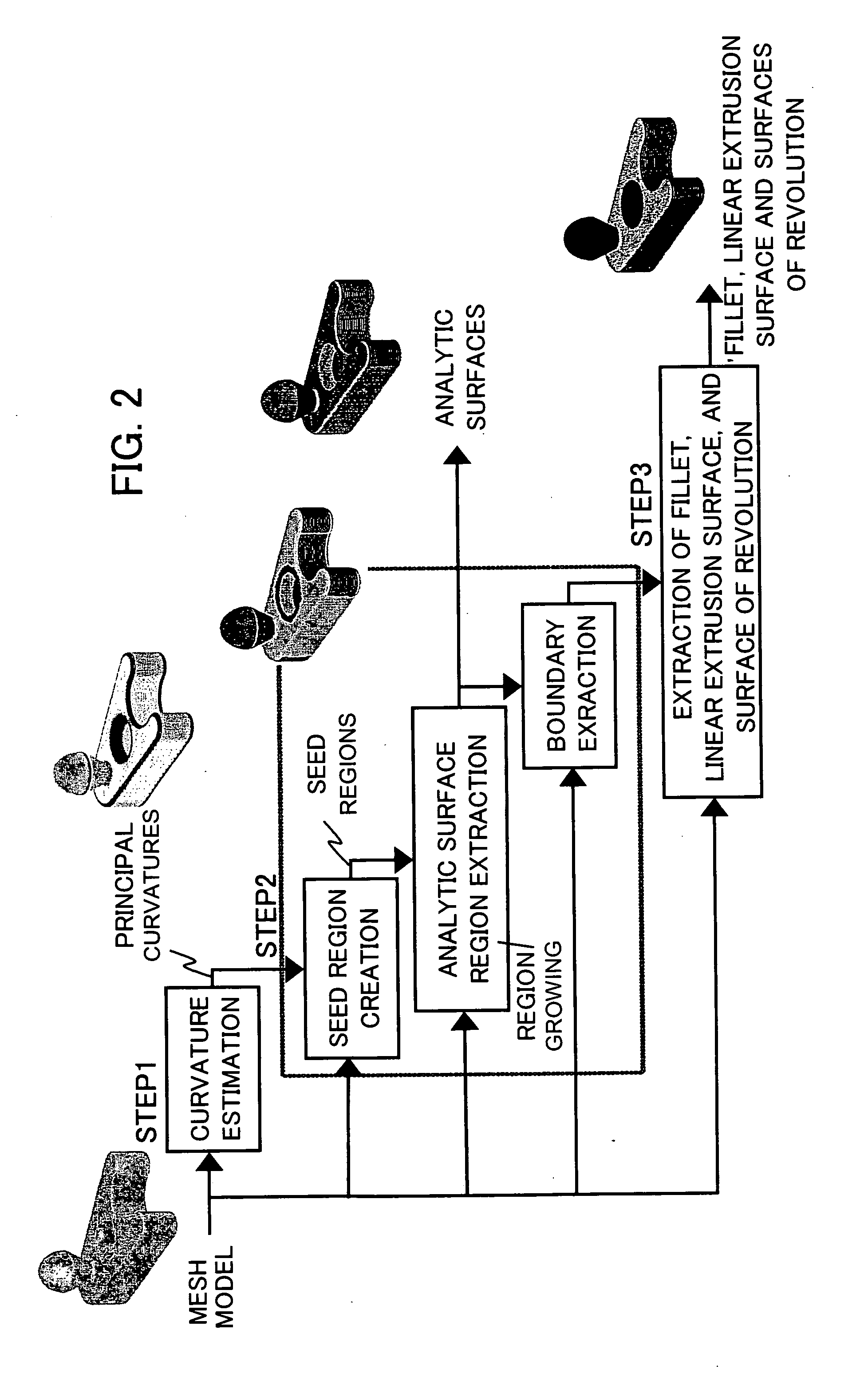Apparatus, method and program for segmentation of mesh model data into analytic surfaces based on robust curvature estimation and region growing
a mesh model and robust curve technology, applied in the field of apparatus, can solve the problems of insufficient range of extracted analytic surface classes, inability to extract regions, and inability to accurately identify the surface geometry of each segmented region, so as to achieve accurate boundary and accurate mesh curvature estimation
- Summary
- Abstract
- Description
- Claims
- Application Information
AI Technical Summary
Benefits of technology
Problems solved by technology
Method used
Image
Examples
examples
[0188]FIGS. 4A-4D, FIGS. 7-8, FIG. 16, FIGS. 17A-17B and FIG. 25 show experimental results to a mesh model for verification. They show that method could work well for a noisy mesh model, and could extract proper regions. Table 2 shows a result of the fitting errors by comparing the positions or the normal / axis directions with the theoretical values derived from a solid model. The average edge length of the mesh model is about 1.8 mm.
[0189]FIGS. 26A-26F show the results to a mesh model (300,000 tri) for verification which was created by the same method as the mesh model in FIG. 4A. It shows that the present segmentation method can extract regions from a noisy complex shaped model, and that the present method can find accurate boundaries of underlying analytic surfaces. This model is composed of only planes and cylinders. The present method extracted 49 plane regions out of 51 and 28 cylinders regions out of 40. The present method properly extracted relatively large regions, but it c...
PUM
 Login to View More
Login to View More Abstract
Description
Claims
Application Information
 Login to View More
Login to View More - R&D
- Intellectual Property
- Life Sciences
- Materials
- Tech Scout
- Unparalleled Data Quality
- Higher Quality Content
- 60% Fewer Hallucinations
Browse by: Latest US Patents, China's latest patents, Technical Efficacy Thesaurus, Application Domain, Technology Topic, Popular Technical Reports.
© 2025 PatSnap. All rights reserved.Legal|Privacy policy|Modern Slavery Act Transparency Statement|Sitemap|About US| Contact US: help@patsnap.com



